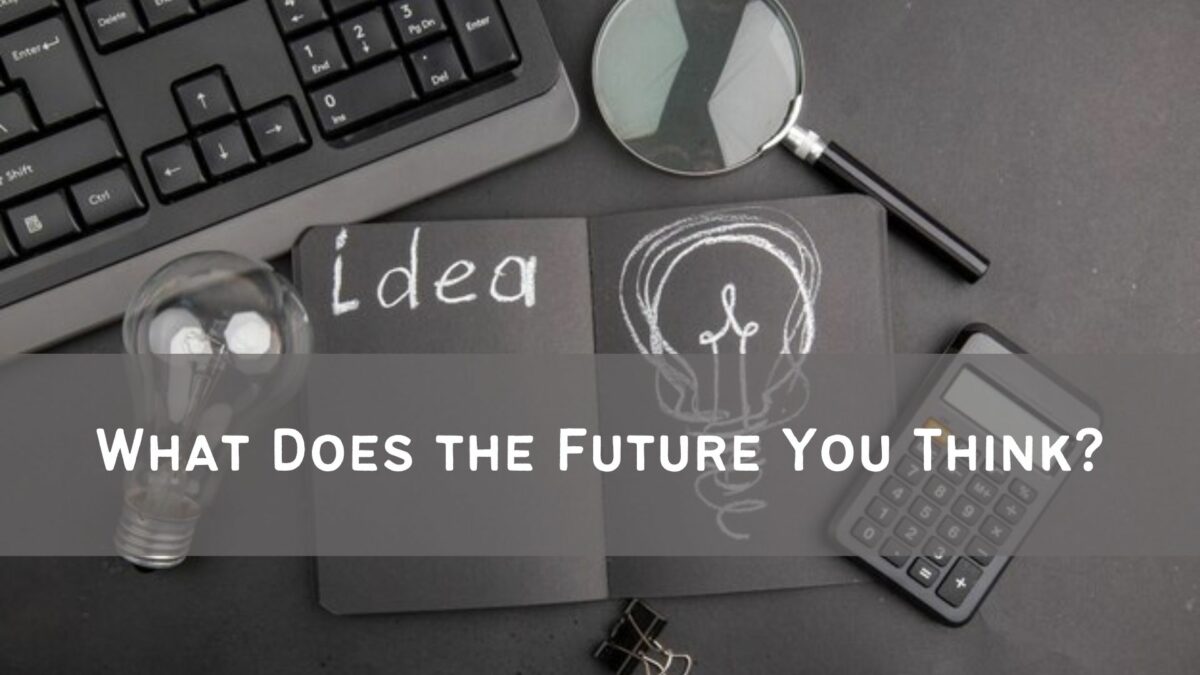“Look to the future, because that is where you’ll spend the rest of your life.”
– George Burns

When I was on my honeymoon, we went to one of those adult arcades like Dave & Busters. While other people were busy slinging Skeeballs and whacking moles, my wife and I went to a simulator that used your current picture to do a couple of projections. The first one was a projection of what our children would look like if we had kids. The poor things would have clearly inherited all of my looks because they were not cute kids.
The second projection was what we would look like when we were older. While the projected children really didn’t bear a resemblance to us, the older projections were hauntingly real. It was as if we’d been transported 50 years into the future and were looking at our future selves. The picture also was a big reality check, at least for me. I had always (and still do) tend to think that I’ll never get older. Yet, here was pretty stark evidence that yes, short of getting hit by the beer truck and not making it to that age, I was going to get older, and that future self wasn’t just some abstract idea or just whatever I saw in the mirror but in some Jetsons future.
Monkey Brain doesn’t like to be reminded that there’s anything aside from the past – which he likes to revise to fit his needs – and the present. The future, particularly anything beyond a few months, is so, so, so, so far out there that he doesn’t really think about it at all. What’s happening in your mind is called hyperbolic discounting (described here), where you’re vastly underestimating what your future self will think about whatever pickle you’ve gotten him into because of your desire for pleasure now.
NYU’s Hal Hershfield and other academics devised a study to see if they could use imaging of the future self to reduce hyperbolic discounting. The problem with Monkey Brain and our future selves is that Monkey Brain treats the future as an absolute stranger. Want to eat that chocolate cake today, knowing that it’s going to add 20 pounds to your waistline, making it harder to walk and increasing the potential for diabetes? Who cares?!? That’s some stranger who will have to deal with tight Levis and insulin shots. Cake. Now. Good.
The problem that Hershfield and his team were trying to overcome was to get people to save more now for their retirement (for my take on how woefully short the average American is in saving for retirement, read by U.S. News & World Report article titled “Middle Class Retirement Delusion By the Numbers”). Since Monkey Brain thinks that in the future you are effectively a random stranger, why would he let you give money to that stranger when he could spend the money now on fun things, like putting in the 183” flat screen TV in the man cave?
In one of the experiments, they utilized a computer program to simulate a future version of the subjects and then asked how much of their incomes the subjects would be willing to save when they saw their future selves. The more money that got allocated to the future self, the happier the future self’s picture was.
The results were pretty striking.
Compared to the control group, who didn’t get to see their future selves, the experimental group – the ones who saw their future selves – saved 30% more for retirement.
This isn’t just a matter of doing the mental exercise of “picture if you will…” Hershfield pointed out that simply trying to imagine your future self from a clean slate has very little impact. It’s far too much of a vague exercise – similar to saying “I’m going to lose weight soon” rather than “I’m going to lose 10 pounds in the next 3 months.” For this to work, you actually have to have an image of your future self to get that shocking feeling like what I did when I saw my future self in the video simulation (which was a completely different shock, mind you, then the poor ugly child that I was projected to have).
That technology is no longer in the realm of hard-core video gamers or the arcade. Merrill Lynch has a tool called “Face Retirement” which allows you to submit a picture of yourself and then have it projected into the future.
I recommend that when you’re about to get your year-end bonus, run through this little simulation so that you are encouraged to save more of that bonus for your retirement. Do the same thing when it comes time to enroll in or renew the company 401k program.
I also recommend smiling. You don’t want that future you to be some dour old curmudgeon, even if you plan on being a dour curmudgeon when you get older. You want that future you to look likable so that you feel even more affinity for him or her and are more willing to give that future self more of your hard-earned present earnings.
If Monkey Brain complains, then show him some pictures of old monkeys. Here is a good one. Don’t let Monkey Brain get in between that new relationship you’ve formed between your present self and your future self.
OK. Who has a scary picture? You can upload one to ImageShack, and afterward, put a link in the comments and we’ll compare Fright Night images!
Author Profile
- John Davis is a nationally recognized expert on credit reporting, credit scoring, and identity theft. He has written four books about his expertise in the field and has been featured extensively in numerous media outlets such as The Wall Street Journal, The Washington Post, CNN, CBS News, CNBC, Fox Business, and many more. With over 20 years of experience helping consumers understand their credit and identity protection rights, John is passionate about empowering people to take control of their finances. He works with financial institutions to develop consumer-friendly policies that promote financial literacy and responsible borrowing habits.
Latest entries
 Low Income GrantsSeptember 25, 2023How to Get a Free Government Phone: A Step-by-Step Guide
Low Income GrantsSeptember 25, 2023How to Get a Free Government Phone: A Step-by-Step Guide Low Income GrantsSeptember 25, 2023Dental Charities That Help With Dental Costs
Low Income GrantsSeptember 25, 2023Dental Charities That Help With Dental Costs Low Income GrantsSeptember 25, 2023Low-Cost Hearing Aids for Seniors: A Comprehensive Guide
Low Income GrantsSeptember 25, 2023Low-Cost Hearing Aids for Seniors: A Comprehensive Guide Low Income GrantsSeptember 25, 2023Second Chance Apartments that Accept Evictions: A Comprehensive Guide
Low Income GrantsSeptember 25, 2023Second Chance Apartments that Accept Evictions: A Comprehensive Guide

